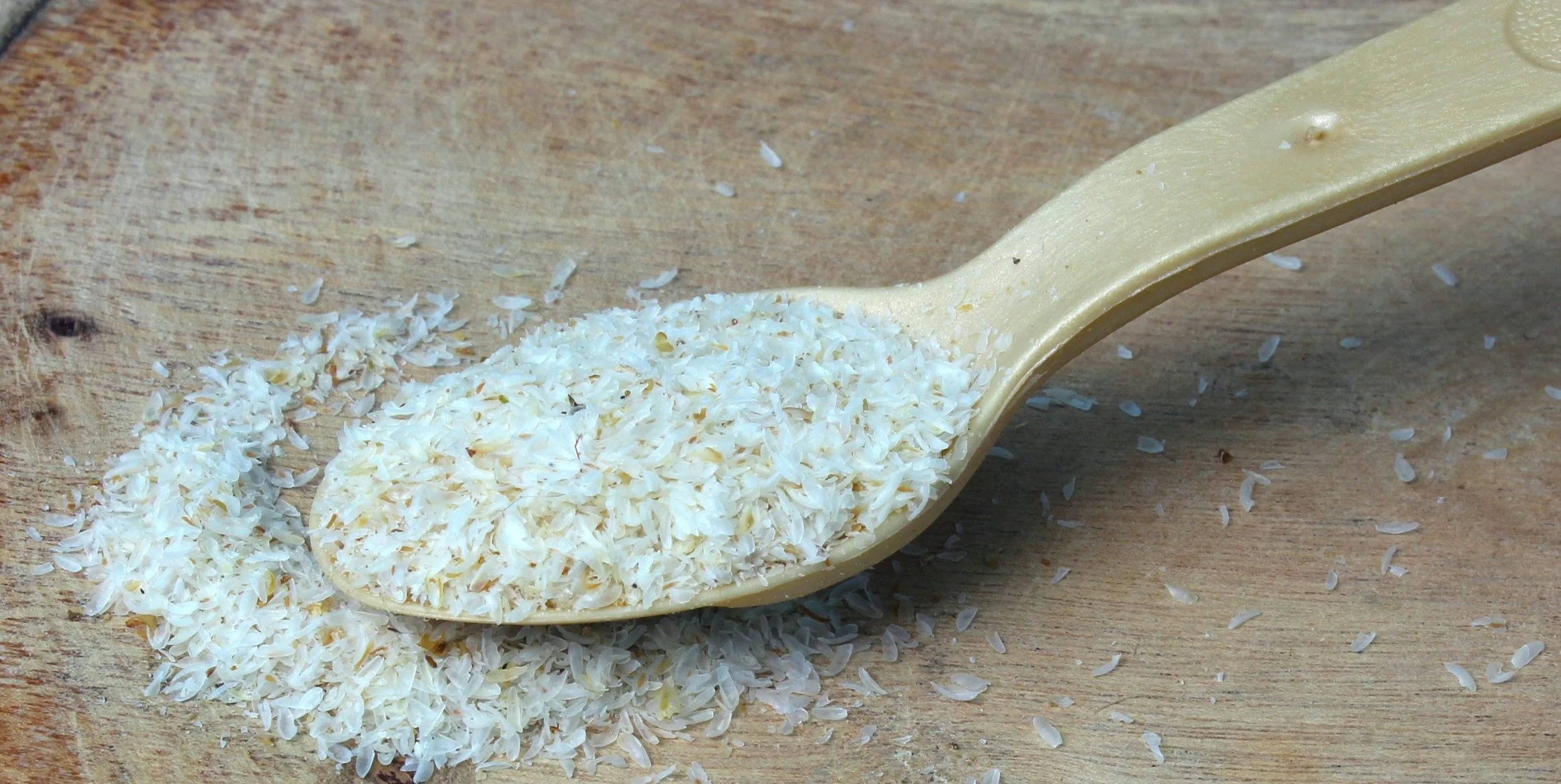Have You Met Psyllium Husk?
Discover > Texas Home Cooking > Have You Met Psyllium Husk?
The other day, I shared my Sunflower seed and Cinnamon bread. The main binding agent in it, the psyllium husk, caught my attention. There is not too much written about it, so I thought I would share what I have learnt over the years.
My mother always had a cardboard box of Isapghol, or psyllium husk in her pantry. It would come out every time us kids had a loose stomach or a bout of constipation. Mama served us a spoon of the beige, delicate, dust like husk with 2 tablespoons of yogurt topped with a spoon of honey.
When you are not able to keep other foods down, the sweet and crunchy mix is quite soothing to have. She said, Isapghol is a cure for both ailments, Now, honestly, I always thought it was a ‘mom’s fib’ when she claimed that, but who knew when I grew up and did my own research I would find it to be true!
What Is Psyllium Husk?
Psyllium is the fiber extracted from the seeds (how long do seeds last?) of the Plantago Ovata. It is an herb mostly cultivated in India. You will find it in husk form or the powdered form.
The husk of the seed is a highly viscous soluble fiber. What this means is the husk binds to water molecules and becomes a slippery gel.
Like other fibers, psyllium doesn’t ferment in your intestines. Study shows that most of the husk’s fibers resist fermentation. Now, this can be both good and bad. Good because it doesn’t encourage the formation of gas-so no bloating or cramps. Bad, because well, it doesn’t do anything in terms of introducing gut friendly bacteria. It isn’t really something you would want to have for the long term.
What Is Psyllium Husk Used For?
Due to the gelatinous consistency that it takes, psyllium is used as a digestive lubricant to get things moving. Even a small amount of the husk swells up by multiple times and does the job of treating constipation.
In cases of diarrhea, Isapghol form bulk mass in the intestines, and thickens stool and slow down its going down the colon.
Fiber supplementing is known to control glycemic response to a meal and thus, reduce insulin and sugar levels in the blood. Psyllium is more effective than other fibers like bran as it has the capacity to form gels that slow down the digestion of food which aids in regulating sugar levels.
If you do take psyllium husk for gut treatment purposes, remember to not take it by itself, as it can activate really fast. It is always advisable to mix it with a liquid, and then spoon it up and eat. A teaspoon usually can mix well in a glass of water.
An Important Reminder!
Though it is effective, taking fiber supplements is not really recommended. The reason being digestive issues need to be tackled at the base. By altering your diet and lifestyle. Taking psyllium husk to treat your constipation is like taking a painkiller for your backache. It is a temporary fix for your symptoms but ignores the problem at hand.
If the real issue is the lack of dietary fiber, it would do you a world of good to just up your intake of foods with roughage. Check out my other blog where I talk about just that!
Psyllium Husk For Baking Purposes
Thanks to its gel forming superpowers, Psyllium has replaced many fibers in low carb cooking, specifically baking. Its perfect for Keto baking, where people struggle with giving up pizza, bread and bagels (how long do bagels last?). The psyllium enables bread to keep more moisture in and give you an airy texture. It also makes the dough more pliable and easier to roll out or shape.
Some tips to keep in mind when you are baking with psyllium husk are:
Use the form of husk specified in the recipe. Many recipes ask for the husk powder. If you have whole husk, simply grind it to a powder in a coffee grinder before you measure it out.
Start with small quantities when you introduce psyllium husk to your diet. No more than a teaspoon a day, till your digestive system can adjust to it.
Drink lots of water or fluids when eating products that contain psyllium husk powder. Ideally, go for 8 oz water per every teaspoon of psyllium husk.
Where Can I Find Psyllium Husk?
You will find it in most of the larger grocery chains in the USA. Look for it in the gluten free baking aisles or health food sections. Alternatively, you can order psyllium husk online, but make sure to look out for options without added sugars and other additives.




